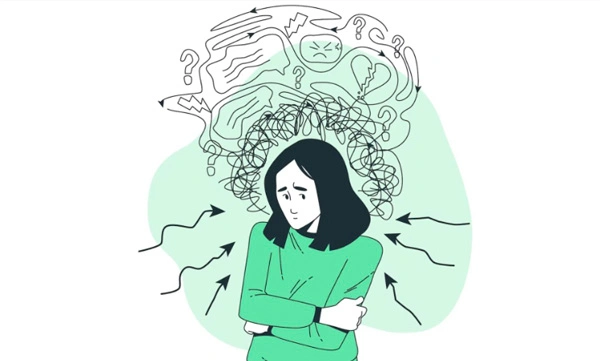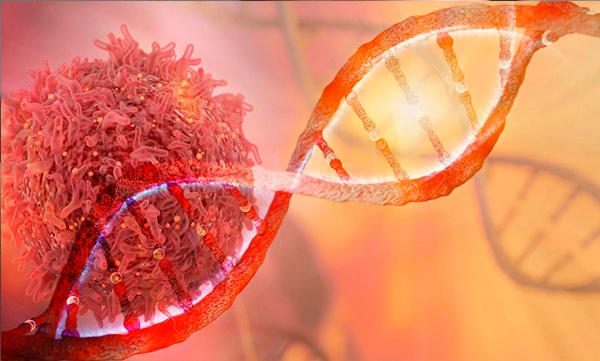Schizophrenia is it genetic

If you tested your DNA with a personal genomics service like 23andMe, AncestryDNA, FamilyTreeDNA, MyHeritage or another testing company, you can learn more about your risk factors for hundreds of diseases. By clicking the button above ⬆️, you can upload your raw DNA data file and receive a personalized 250-page health report with research links that is the most comprehensive.
A psychosis known as schizophrenia impacts an individual's thinking, sense of self, and perceptions, and is classified as a brain disorder. This disorder usually manifests during the late teenage years or early adulthood.
According to experts, there could be a correlation between schizophrenia and your genetic makeup - a molecular blueprint passed down from your parents that exists in every cell of your being. This blueprint plays a role in determining various aspects of your physical appearance, such as eye color and height, as well as certain facets of your character.
Scientists have identified at least 10 different possible genes that, when altered, can increase the risk of schizophrenia by a factor of four to 50, depending on the specific gene.
Despite the vast array of genetic variants associated with schizophrenia, research indicates that they are primarily concentrated in genes expressed in neurons. These findings suggest that both rare high-risk mutations and common low-risk genetic variants consistently implicate genes such as GRIN2A, which are also significant in epilepsy and neurodevelopmental disorders.
Alternatively, in some instances, the reason could be attributed to the removal of a particular group of genes. To illustrate, the elimination of 21 distinct genes through the "3q29 deletion" results in a 40-fold increase in susceptibility.
The likelihood of developing schizophrenia is believed to be influenced by variations in numerous genes. Typically, the risk of developing the disorder is increased by the combination of multiple genetic alterations, each with a minor impact. The relationship between these genetic changes and schizophrenia is not yet fully comprehended, and research into the genetics of this condition is ongoing. Additionally, these genetic changes can interact with environmental factors that are linked to an elevated risk of schizophrenia, such as prenatal exposure to infections or severe childhood stress.
The risk of schizophrenia may be heightened by the removal or duplication of genetic material in various chromosomes, potentially impacting multiple genes. One specific example is a microdeletion in the 22q11 region of chromosome 22, which may be linked to a minority of schizophrenia cases. Those with this deletion may also exhibit other symptoms, including heart defects, immune system issues, and a cleft palate, and may be diagnosed with 22q11.2 deletion syndrome.
Follow the link of the selected polymorphism to read a brief description of how the selected polymorphism affects Schizophrenia and see a list of existing studies.
SNP polymorphisms related to the topic Schizophrenia:
| rs4129148 | There is a 3.23 times increased risk of developing schizophrenia. |
| rs12966547 | The rs12966547 variant of the long non-coding RNA LOC105372125 is significantly associated with susceptibility to schizophrenia and bipolar disorder. |
| rs1625579 | The risk genotype MIR137HG rs1625579 is associated with corpus callosum volume in schizophrenia |
| rs1800532 | The haplotype of the tryptophan hydroxylase gene (TPH1) is associated with an increased risk of schizophrenia and suicidal tendencies. |
| rs6675281 | The DISC1 locus modulates neurodevelopmental gene expression and is associated with cortical grey matter volumes and schizophrenia risk. |
| rs2312147 | Meta-analysis and brain imaging data support the involvement of VRK2 (rs2312147) in susceptibility to schizophrenia. |
| rs6603272 | Interleukin-3 receptor polymorphism is associated with schizophrenia, risk ratio 2.74. |
| rs947267 | Genetic variation in the DAOA gene is associated with schizophrenia and bipolar disorder. |
| rs165599 | Genetic variability in COMT increases the risk of psychotic and affective disorders. |
| rs6277 | Associated with a 1.6-fold increased risk of schizophrenia. |
| rs839523 | A SNP variant in ErbB4 is associated with bipolar affective disorder, major depressive disorder and schizophrenia. |
| rs1006737 | A polymorphism of the potential-dependent calcium channel gene CACNA1C, is associated with risk of bipolar disorder, schizophrenia and other psychiatric disorders. |
| rs2159100 | A polymorphism of the potential-dependent calcium channel gene CACNA1C, is associated with risk of bipolar disorder, schizophrenia and other psychiatric disorders. |
| rs1801028 | A polymorphism in the DRD2 gene for the dopamine D2 receptor increases 1.4-fold the risk of schizophrenia in the heterozygous GC genotype. |
| rs2270641 | A break in the vesicular monoamine transporter gene SLC18A1 - 3.7 times higher risk of schizophrenia. |
| rs14403 | |
| rs27388 | |
| rs36563 | |
| rs171748 | |
| rs175174 | |
| rs302719 | |
| rs310762 | |
| rs497768 | |
| rs707284 | |
| rs751229 | |
| rs778371 | |
| rs795009 | |
| rs821722 | |
| rs833497 | |
| rs855050 | |
| rs967244 | |
| rs1073179 | |
| rs1198588 | |
| rs1411771 | |
| rs1417866 | |
| rs1502844 | |
| rs1538774 | |
| rs1572299 | |
| rs1783925 | |
| rs2024513 | |
| rs2053149 | |
| rs2119783 | |
| rs2356606 | |
| rs2373000 | |
| rs2437896 | |
| rs2499846 | |
| rs2793093 | |
| rs2812385 | |
| rs2848745 | |
| rs2905424 | |
| rs2910032 | |
| rs2949006 | |
| rs3131296 | |
| rs3738401 | |
| rs3738402 | |
| rs4129585 | |
| rs4687552 | |
| rs4801131 | |
| rs4938445 | |
| rs4950928 | |
| rs4958803 | |
| rs6422441 | |
| rs6461049 | |
| rs6541290 | |
| rs6878284 | |
| rs6932590 | |
| rs7004633 | |
| rs7085104 | |
| rs7221595 | |
| rs7582658 | |
| rs7598440 | |
| rs7940866 | |
| rs9268895 | |
| rs9272219 | |
| rs9431714 | |
| rs9663054 | |
| rs9960767 | |
| rs10275045 | |
| rs10503253 | |
| rs10789369 | |
| rs10790212 | |
| rs11191580 | |
| rs11225703 | |
| rs11532322 | |
| rs11995572 | |
| rs12991836 | |
| rs13194053 | |
| rs16854957 | |
| rs16897515 | |
| rs17101921 | |
| rs17504622 | |
| rs17512836 | |
| rs17651507 | |
| rs17662626 | |
| rs17883192 | |
| rs28694718 | |
| rs114002140 | |
About The Author
Li DaliLi Dali, a National Foundation for Outstanding Youth Fund recipient, is a researcher at the School of Life Sciences in East China Normal University. He earned his PhD in genetics from Hunan Normal University in 2007 and conducted collaborative research at Texas A&M University during his doctoral studies. Li Dali and his team have optimized and innovated gene editing technology, leading to the establishment of a world-class system for constructing gene editing disease models.


